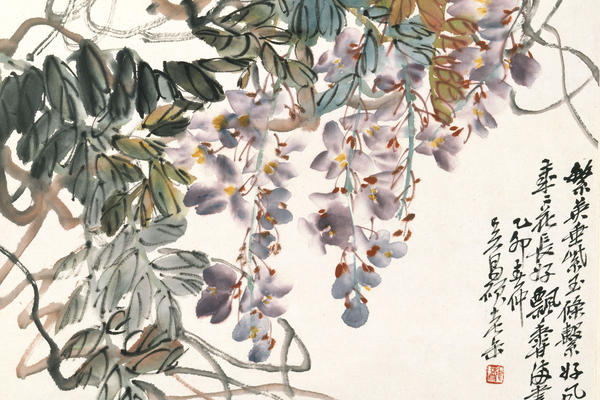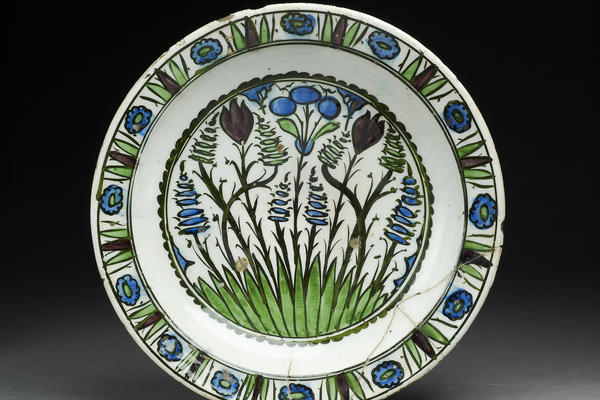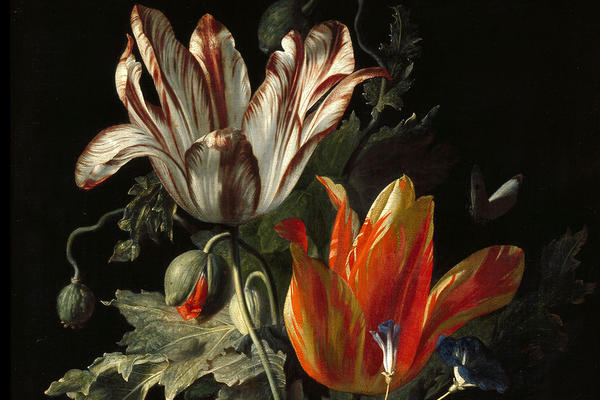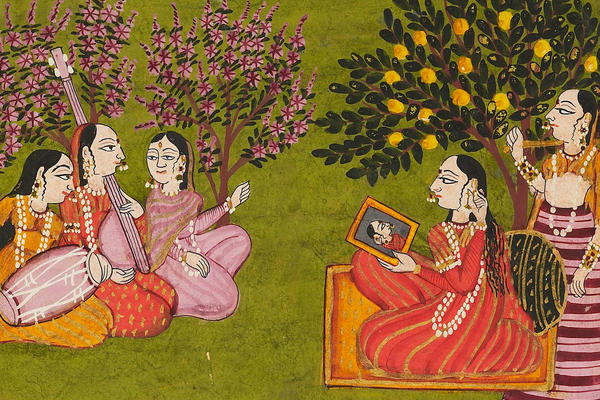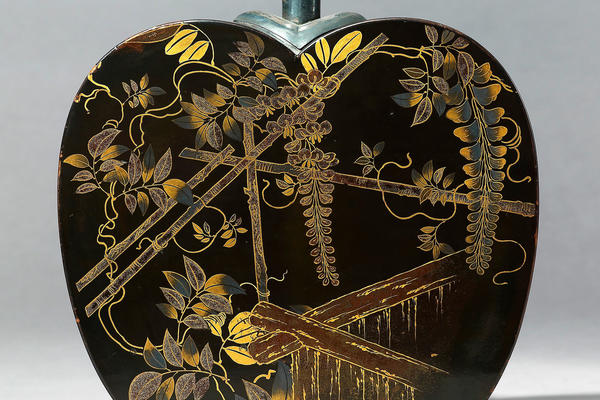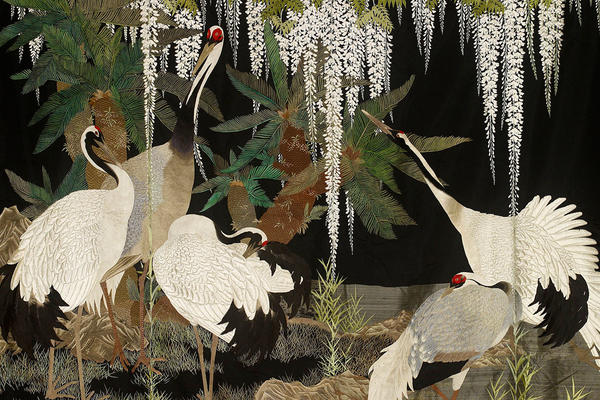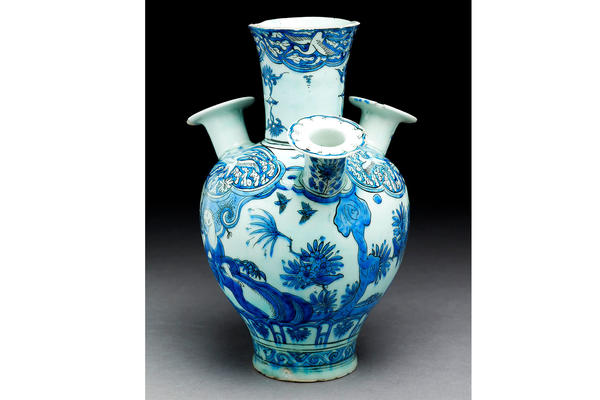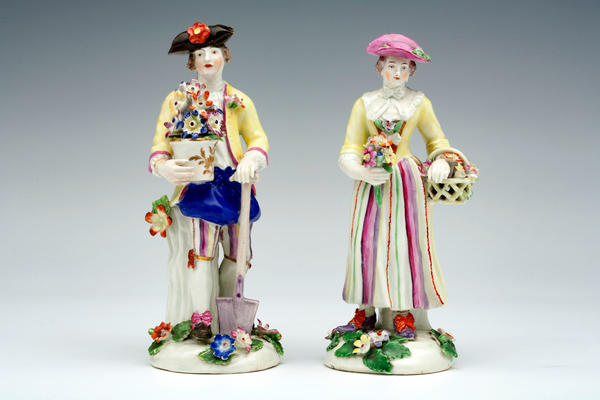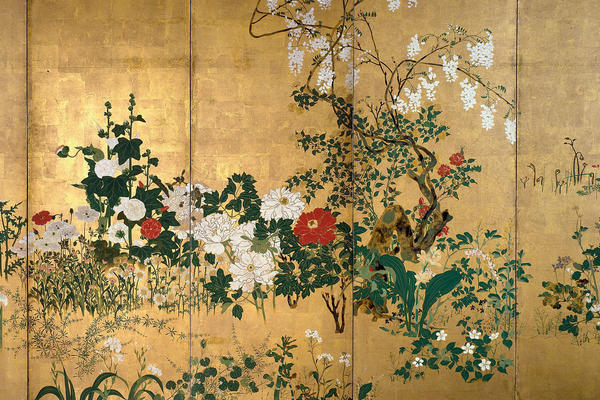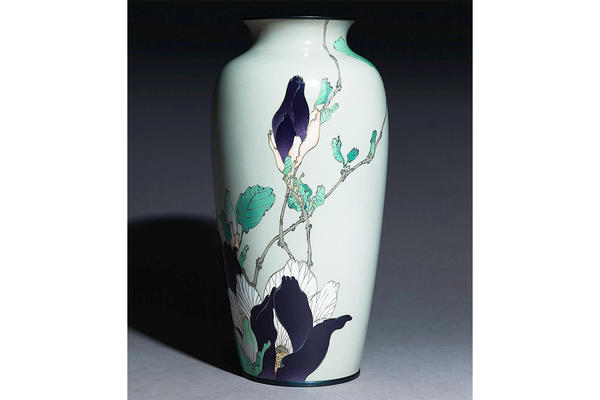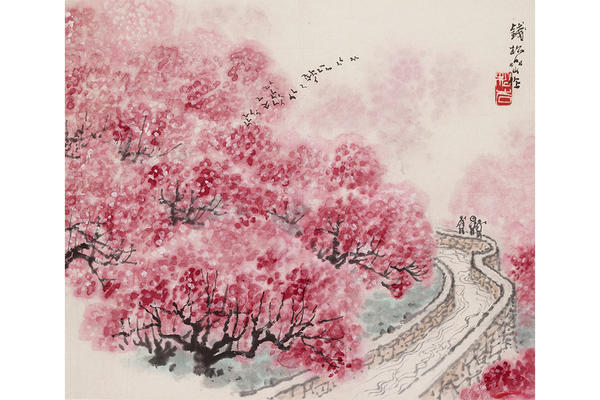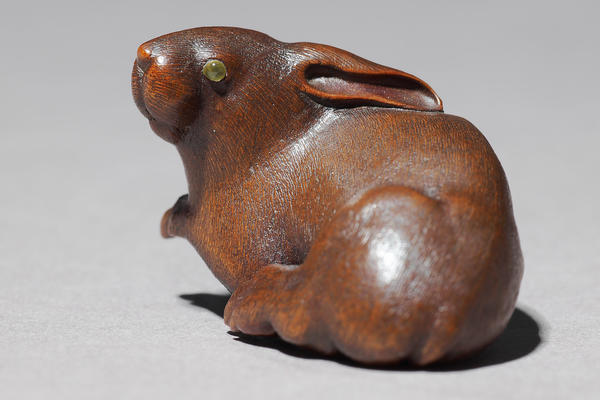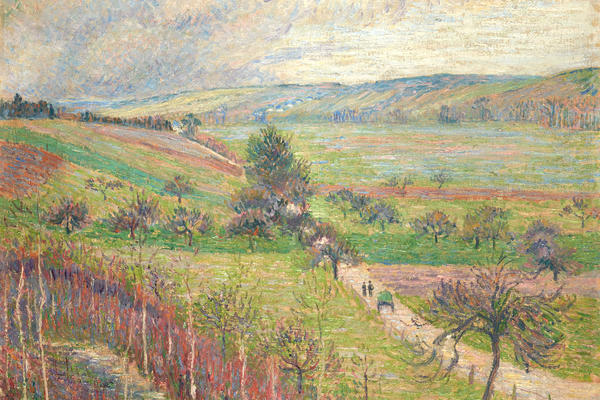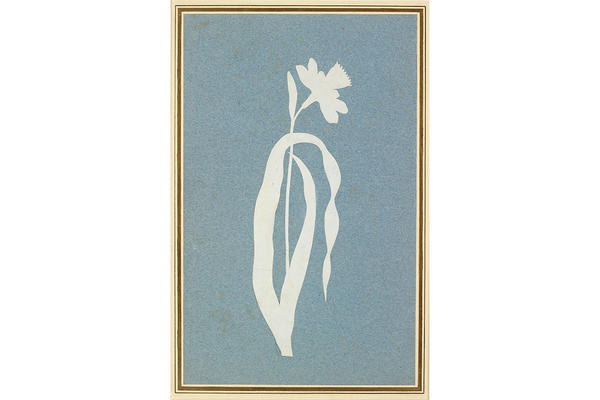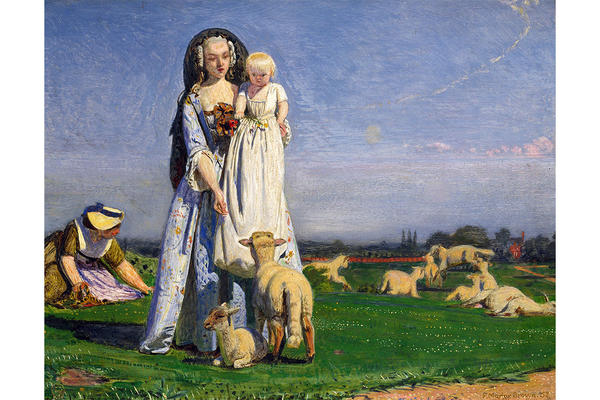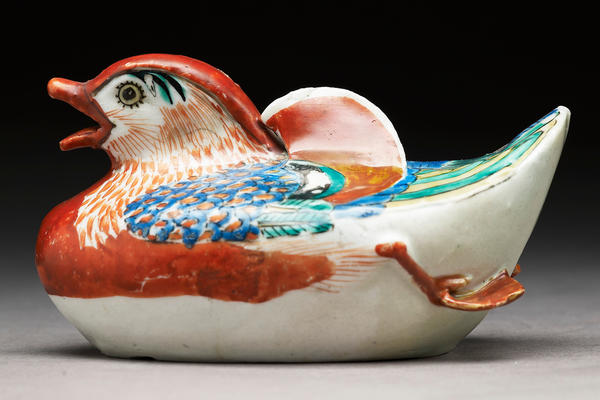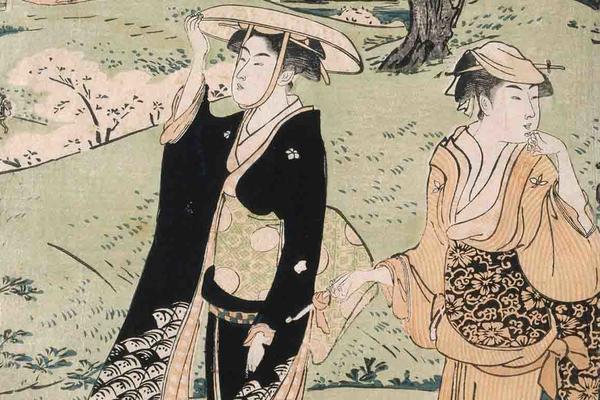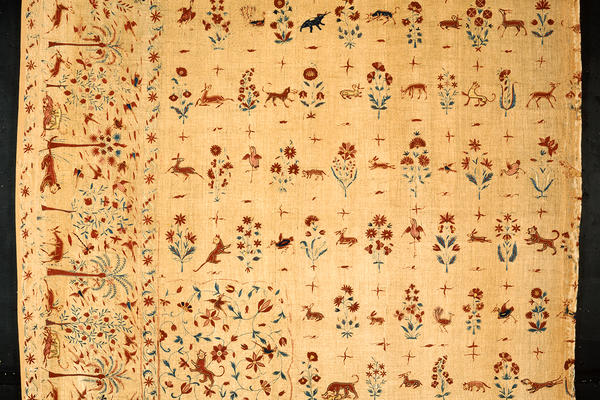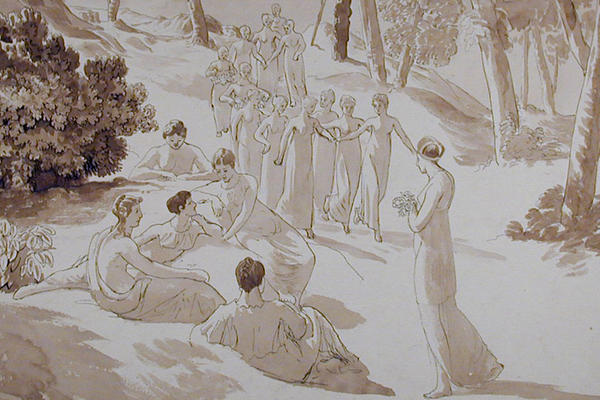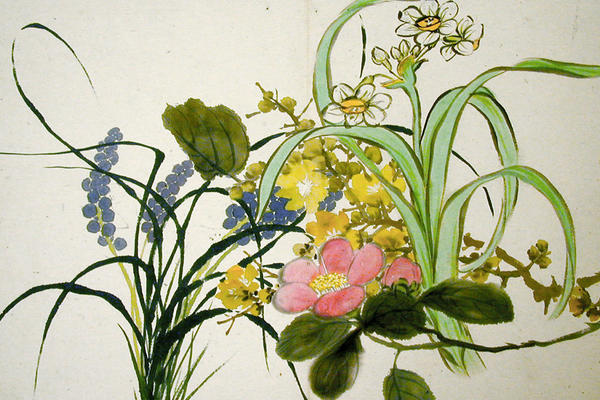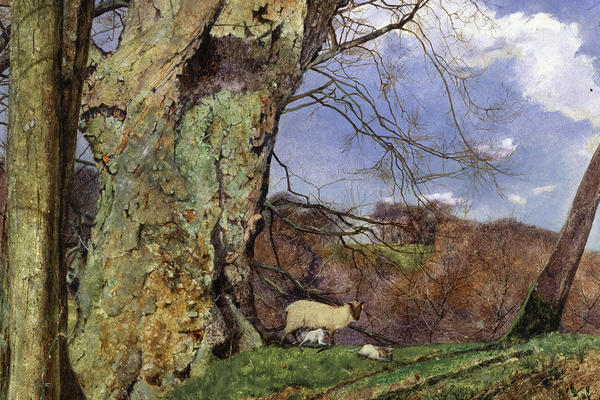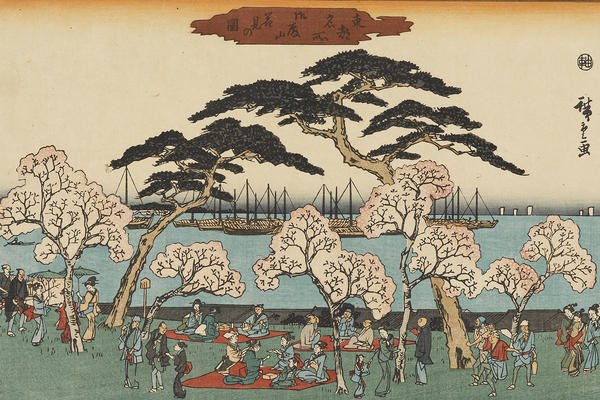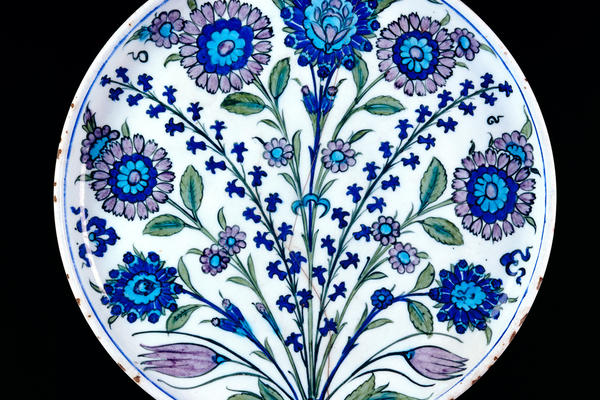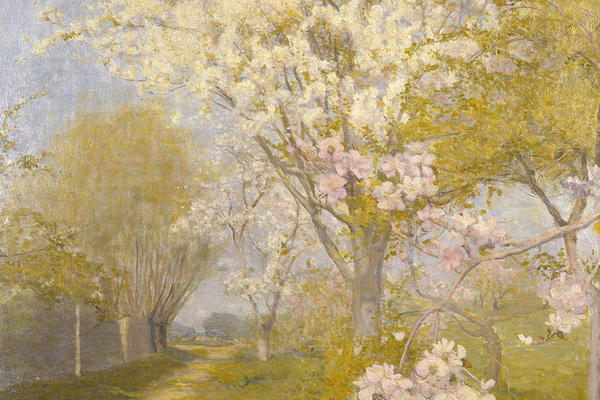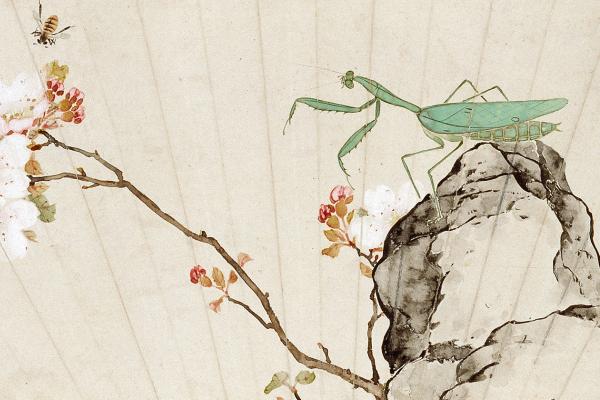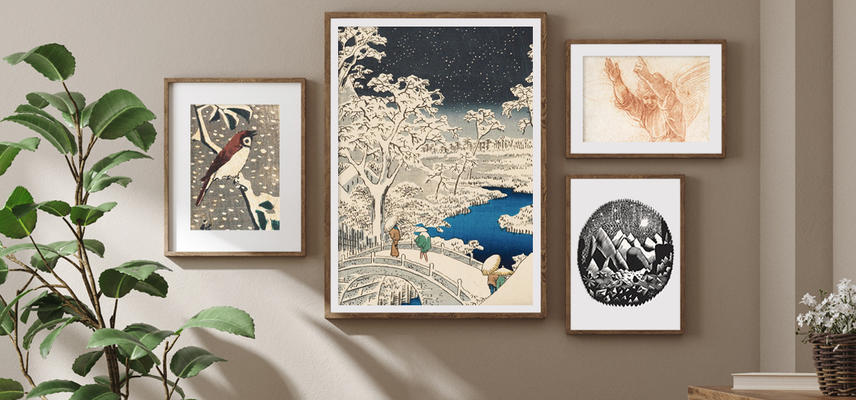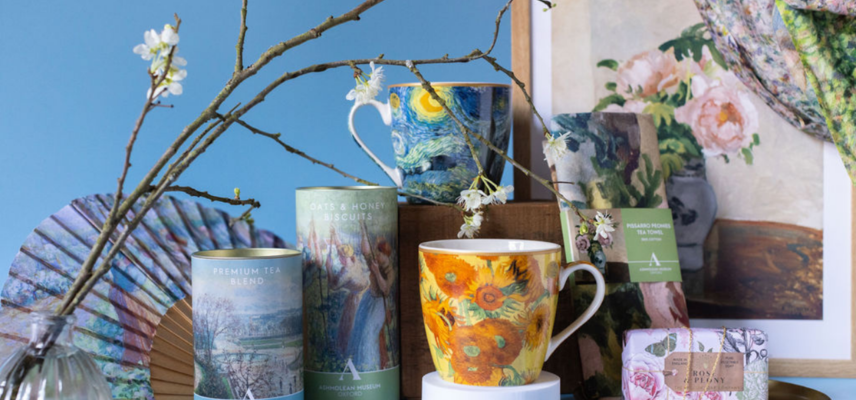CELEBRATING SPRING
A selection of spring-inspired objects from our collection
6-minute read
We’re celebrating some of our favourite blossoms, blooms and spring scenes from the collection.
This bountiful season has inspired artists from all corners of the world for many, many centuries. Enjoy the stories behind these bright and beautiful works.
MAY MEDLEY
May blooms and garden delights, in particular wisteria and tulips, have inspired many Eastern and Western artists. Enjoy this May parade.
Wisteria print, 1915
Dish with tulips, 16th century
A vase of flowers (detail) by Simon Vereist, 1669-1675
A lady seated with mirror in a garden (details) c. 1909
Flask with wisteria, 17th century
Cranes, cycads and wisteria, 1895-1915
Tulip vase from Iran, 1609-1700
Figures of gardeners (pair), c. 1770 Worcester porcelain
SELECTED SPRING ARTWORKS SLIDESHOW
Screen of Spring and Summer Flowers by Watanabe Shikō
Japanese cloisonné vase with magnolias
Spring landscape
Netsuke rabbit
La Route de Thierceville, (Early Spring) by Lucien Pissarro
A Daffodil by Philipp Otto Runge
The Pretty Baa Lambs by Ford Maddox Brown, 1852
Water-dropper shaped as a mandarin duck
Cherry blossom viewing at Asuka Hill (detail) by Torii Kiyonaga
Quarter of an Indian coverlet with animals, birds, flowers, and insects among trees (detail)
The Rite of Spring by Cornelius Varley
Spring Flowers by Ren Xiong
SPRING STORIES
Crocus Cup
Ancient Minoan decorated cup, 1500–1450 BCE
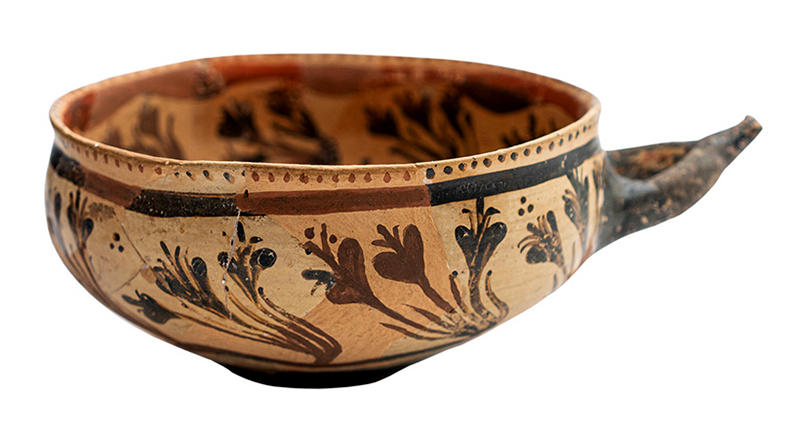
From ancient Crete, this little ceramic cup decorated with a crocus design features in our Labyrinth exhibition. It comes from a tomb found under the modern city of Heraklion.
Crocuses were both a religious offering and a source of fabric dye - coloured woven cloth was an important export from Crete in this period. Depictions of them could also relate to the arrival of spring.
LI5152.37
On loan from the Archaeological Museum of Heraklion © Hellenic Ministry of Culture and Sports / Hellenic Organization of Cultural Resources Development
On display in the Labyrinth exhibition
Dish with Flower Sprays
Turkey, Iznik 1530–1550
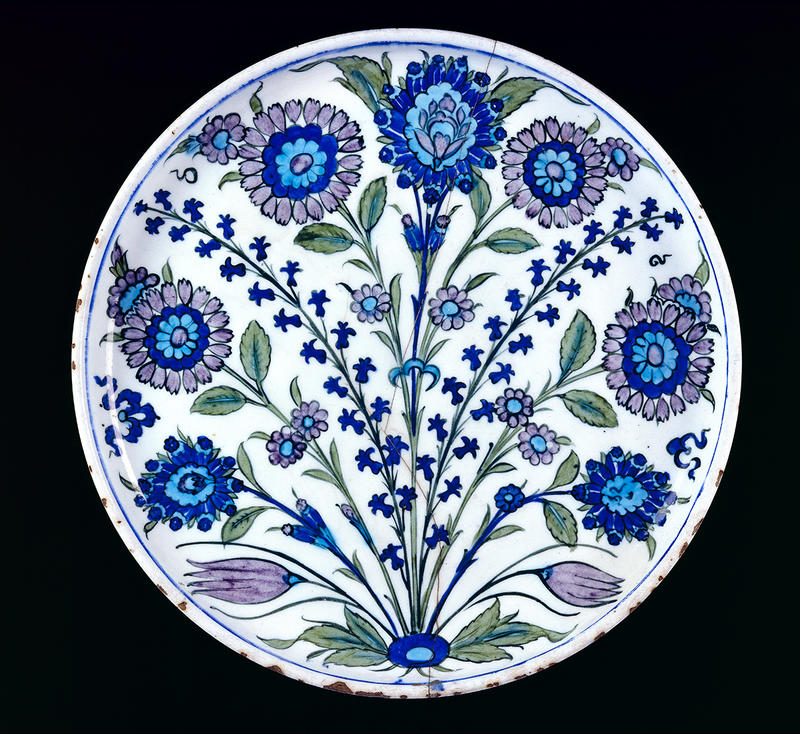
This striking floral plate was made in Iznik, Turkey around 1530–1550, which at the time was under Ottoman rule.
Floral motifs became a hallmark of classical Ottoman art and architectural decoration between the 1500s and 1600s, due to the extensive use and appreciation of flowers in Turkey and neighbouring countries. Blooms like carnations, tulips and hyacinths, to name some of the most popular, were planted in their thousands in both public and private gardens and often adorned people's headgears and attires.
EAX.3277
On display in the Islamic Middle East Gallery 31, first floor
A Study, in March
by John William Inchbold, 1855
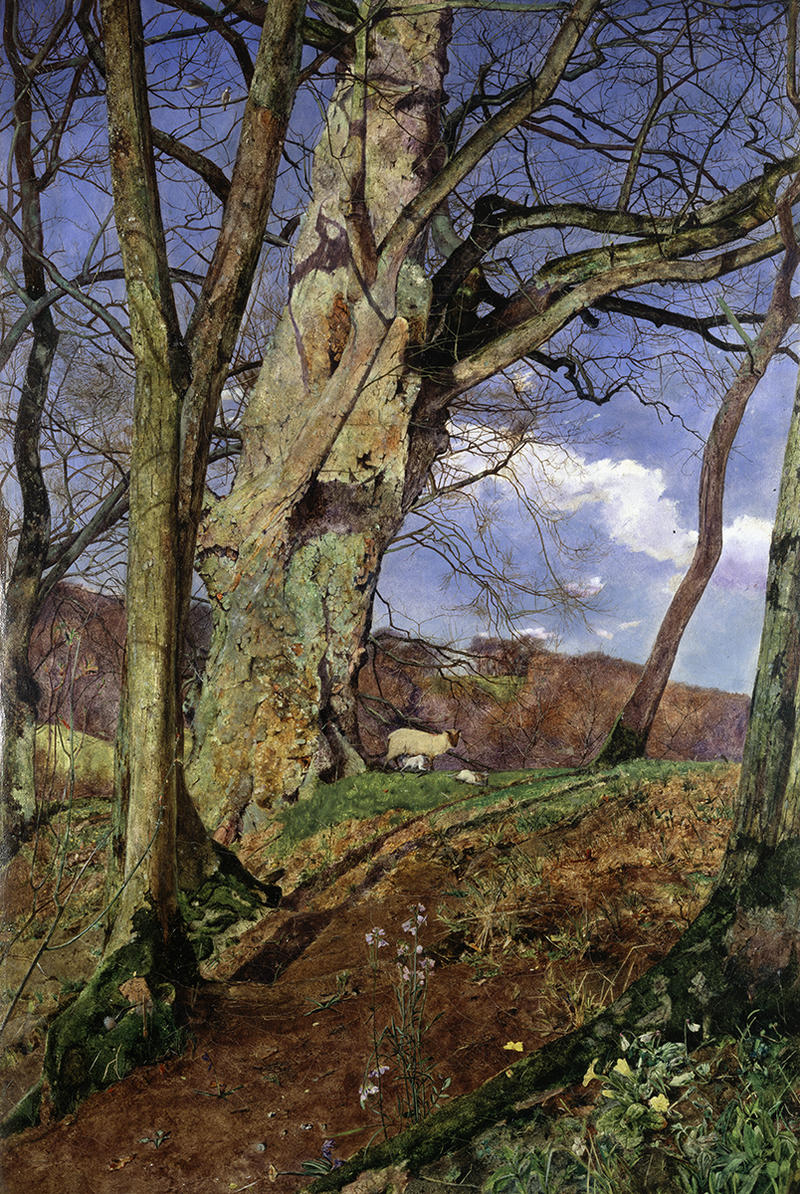
This spring scene was painted by Pre-Raphaelite artist John William Inchbold (1830–1888). It is thought to have been exhibited at the Royal Academy in 1855, and inspired by the words of William Wordsworth in ‘Excursion’...
‘The primrose and harebells in the foreground and the ewe and two lambs on the ridge,
herald the arrival of spring,
though the trees are still bare,
their branches picked out in sharp detail against the blue sky’
John William Inchbold was born in Leeds, Yorkshire, the son of a Yorkshire newspaper owner, Thomas Inchbold. Having shown a talent for drawing as a young man, he moved to London and became a student of the Royal Academy in 1847. This spring painting by him shows the Ruskin-inspired attention to detail and nature celebrated by artists of the Pre-Raphaelite Brotherhood.
WA1962.4.2
On display in the Pre-Raphaelites Gallery 66, third floor
View of Cherry Blossom-Viewing at Gotenyama
by Utagawa Hiroshige, 1843–47
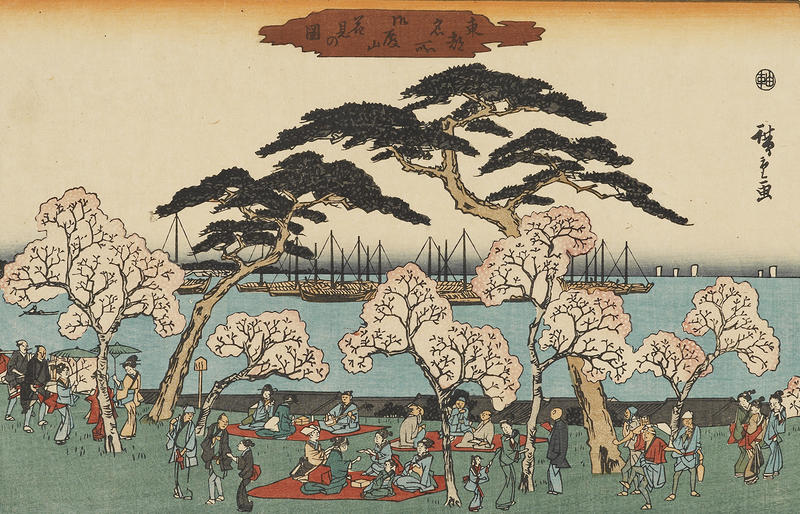
The Japanese tradition of viewing the cherry blossoms in spring is so popular that it has its own name – hanami, or flower viewing.
From the end of March, cherry trees blossom all across Japan and many people plan to visit their favourite hanami sites at 'just' the right moment. In fact, there is even a cherry blossom forecast announced by the Japanese Weather Bureau each year.
The practice is centuries old, and was once limited to the elite of Japanese society. Today people gather in great numbers, hosting picnics and parties under the cherry trees to celebrate the start of spring.
This woodblock print by Japanese artist Utagawa Hiroshige shows just that – joyous celebrations beneath the blossoms.
EAX.4709
Not on display
Gentle Spring
by Frederick Sandys, 1865
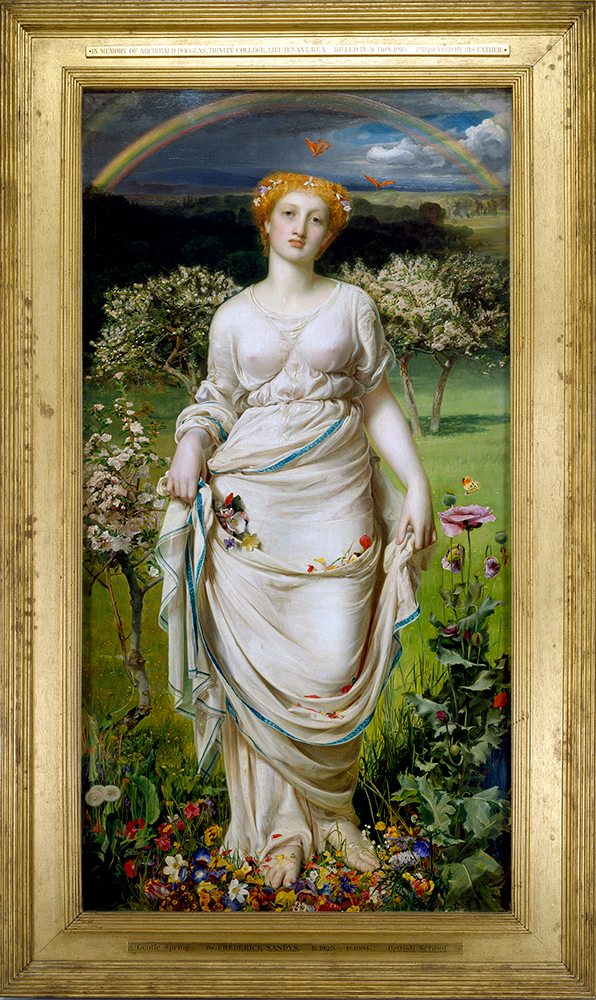
A splendid example of Pre-Raphaelite oil painting, this large artwork by Frederick Sandys (1829-1904) was exhibited at the Royal Academy in 1865. The figure was painted in the garden of the poet and novelist, George Meredith. She represents Proserpina returning from the land of the dead. Sandys joined Rossetti's circle in 1857 and lived with him in Cheyne Walk for most of 1866.
See the Gentle Spring painting and Proserpina's story come to life in our animation >
WA1923.2
On display in the Pre-Raphaelites Gallery 66, third floor
Apple Blossom at Dennemont
by Charles Conder, 1893
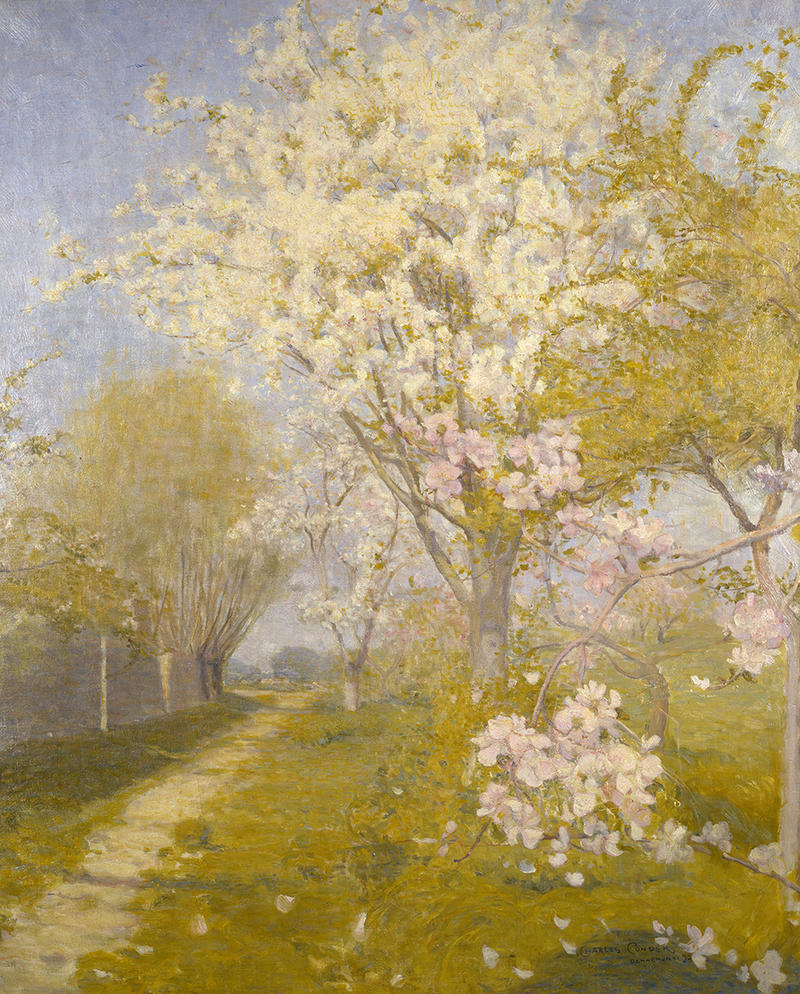
This idyllic scene was painted by English-born painter Charles Conder (1868-1908). Conder emigrated to Australia when he was 16, where he would eventually become a pivotal part of the Heidelberg School - an Australian art movement with marked similarities to French Impressionism.
The group was named after a rural area outside of Melbourne, where the artists gathered to live and paint at an informal artist’s camp called the Mount Eagle Homestead. Members of the Heidelberg movement often painted ‘en plein air’, or out in nature, with an emphasis on light, colour and the use of experimental brush strokes.
Conder painted this picture after he had left Australia for Europe, spending the remainder of his life between France and England. When he arrived in Paris in 1890, he was particularly interested in Monet and Japanese art. He rented a small house in the countryside and often went on painting excursions to nearby towns, including Dennemont, where this was painted.
WA1940.3
Not on display
Three Studies of Rosebuds
by May Morris, 1877–1905
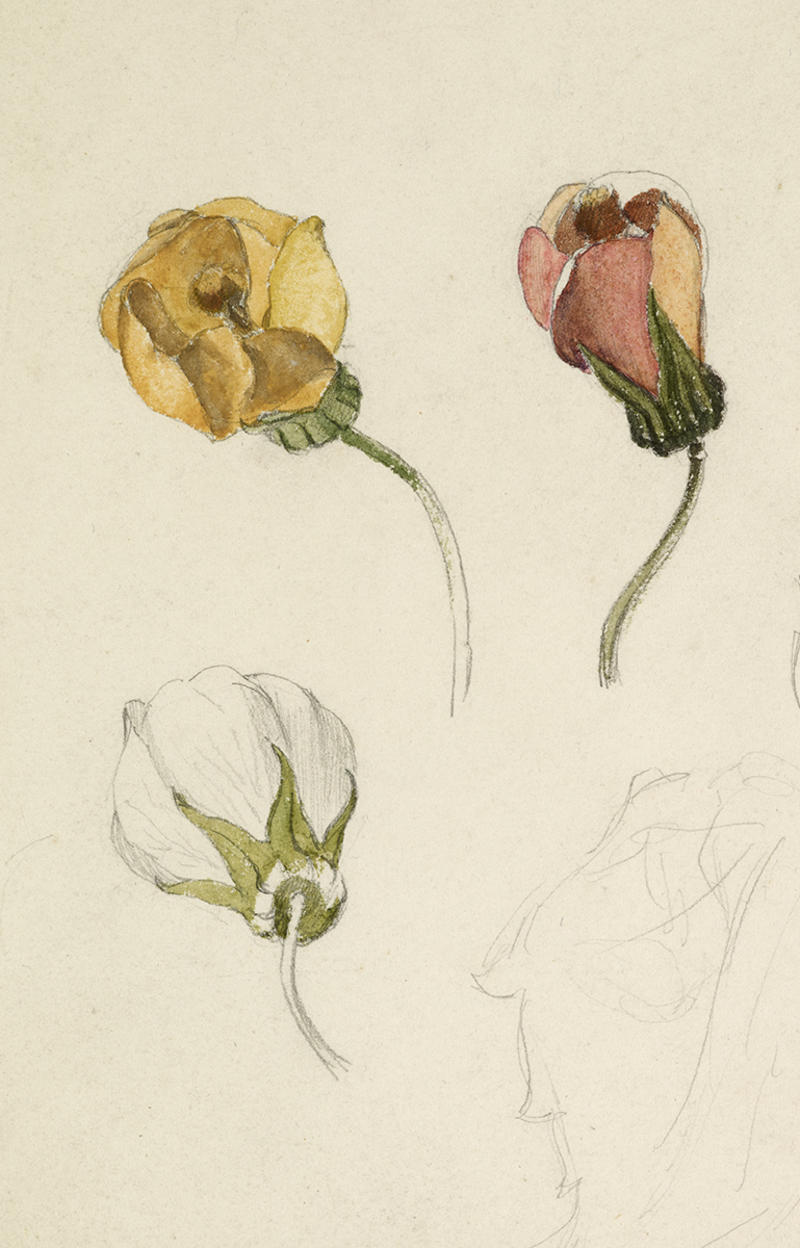
These delicate explorations of rosebuds were drawn and painted by May Morris (1862–1938, daughter of William and Jane Morris), an influential embroiderer and designer of the Arts & Crafts movement in mid-19th-century Britain.
After studying at the South Kensington School of Design, Morris took over the embroidery section of her father’s company, Morris & Co, in 1885. From this point, almost all new designs produced by the company were by May and her father’s assistant John Henry Dearl. She often took inspiration directly from nature, producing many botanical sketches and patterns.
In 1907, Morris also founded the Women’s Guild of Arts – a response to the gender-exclusive Art Workers Guild, and an attempt to raise the status and bargaining power of independent female artists.
WA1941.108.169
Western Art Print Room, view by appointment



